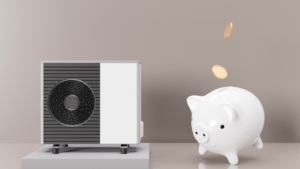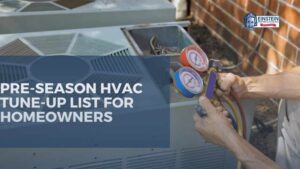If you’re considering installing a furnace, you might be wondering about the complexities involved in the process. Furnace installation is a critical task that requires precision and expertise to ensure the safety and efficiency of your heating system. In this article, we’ll delve into the difficulty of how to install a furnace, detailing the various aspects, steps involved, and reasons why hiring a professional is often the best choice. Additionally, we’ll provide estimates of the associated costs.
Furnace Installation Difficulty
Precision in Details:
- Installing a furnace involves understanding technical details like electrical wiring and gas connections. It’s not just about the basics; it requires a level of technical know-how that might be tricky for a DIY enthusiast.
Gas and Electricity:
- Dealing with both gas and electricity in a furnace demands specific knowledge. Professionals handle the connection to the gas line and wiring with care to avoid safety issues and system malfunctions that DIY attempts might risk.
Getting the Size Right:
- Picking the right-sized furnace is like solving a puzzle. It involves considering factors like climate, insulation, and home size. Getting this wrong can lead to inefficient heating and higher energy bills.
Understanding Rules and Regulations:
- Local rules and regulations make furnace installation more complicated. Professionals are familiar with these standards, ensuring that the installation meets safety and legal requirements.
Ventilation Challenges:
- Installing the ventilation system is critical for safety and efficiency. Knowing how to handle combustion byproducts and ensure proper ventilation is a professional skill that DIY installers might find challenging.
Ductwork Dilemmas:
- Creating an effective ductwork system for even heating is crucial. DIY attempts at ductwork design might lead to uneven temperatures and a heating system that doesn’t perform well overall.
Setting the Right Temperature:
Calibrating the thermostat sounds simple but is crucial for precise temperature control. It requires understanding the furnace unit and the home environment, a skill professionals develop through experience.
Managing Risks:
- Dealing with flammable materials and high-voltage parts demands careful risk management. Professionals are trained to handle these risks, ensuring a safe installation process.
Troubleshooting Skills:
- If problems occur during or after installation, troubleshooting efficiently is vital. Professionals have the skills to diagnose and fix issues quickly, minimizing disruptions and ensuring the longevity of the heating system.
Continuous Learning:
- The world of heating systems is always evolving. Professionals stay updated through continuous learning. Attempting a DIY installation means dealing with a steep learning curve, which takes time that could be better spent elsewhere.
Professionals are more equipped to do the job knowing the complexity of installing a furnace. The following lists the steps for installing a furnace in your Bend home.
Furnace Installation Steps
Assessment and Planning:
- Evaluate your heating needs, considering factors like climate, insulation, and the size of your home. Plan the location of the furnace and assess the accessibility for installation.
Ductwork Design:
- Design the ductwork layout to ensure proper distribution of heated air throughout your home. Incorrect ductwork design can lead to uneven heating and decreased efficiency.
Gas and Electrical Connections:
- Connect the furnace to the gas line and electrical supply. Choose the right furnace for you, depending on your needs. This step requires precision to prevent gas leaks or electrical malfunctions that could pose serious safety risks.
Ventilation Installation:
- Install the ventilation system, including flues and exhaust pipes, to safely expel combustion byproducts. Proper ventilation is critical for the efficient and safe operation of the furnace.
Testing and Calibration:
- Conduct thorough testing of the furnace to ensure all components are functioning correctly. Calibrate the thermostat and make necessary adjustments to achieve the desired temperature settings.
Disadvantages of DIY Furnace Installation
Safety Hazards:
- One of the most significant drawbacks of opting for a DIY furnace installation is the increased risk of safety hazards. Handling gas lines and electrical components without proper knowledge and experience can lead to accidents, gas leaks, and electrical malfunctions, posing a threat to both property and occupants.
Incorrect Sizing and Capacity:
- Determining the right size and capacity for a furnace requires a nuanced understanding of various factors. DIY enthusiasts may struggle to accurately calculate heating needs based on square footage, insulation levels, and other variables, leading to an improperly sized system and compromised efficiency.
Inadequate Ductwork Design:
- Designing and installing ductwork is a crucial aspect of furnace installation. DIY attempts may result in suboptimal ductwork layouts, leading to uneven heating throughout the home. Poorly designed ducts can reduce efficiency and compromise the overall performance of the heating system.
Non-Compliance with Regulations:
- DIY installations often lack the thorough understanding of local building codes and regulations. This can result in installations that fail to comply with safety standards, potentially leading to legal complications and the need for costly corrections in the future.
Limited Troubleshooting Skills:
- In the event of issues arising during or after installation, DIY enthusiasts may lack the troubleshooting skills necessary to diagnose and rectify problems efficiently. This can result in prolonged periods of discomfort, increased energy bills, and potential damage to the furnace unit.
Voided Warranties:
- Many furnace manufacturers and suppliers have specific installation requirements to maintain the warranty validity. DIY installations may inadvertently void warranties, leaving homeowners without the manufacturer’s support in case of defects or malfunctions, especially during furnace repairs.
Long-term Efficiency Concerns:
- DIY installations may compromise the long-term efficiency of the furnace. Inadequate installation can lead to increased energy consumption, higher utility bills, and a shorter lifespan for the heating system.
Time-Consuming Learning Curve:
- Furnace installation requires a specialized skill set that DIY enthusiasts may not possess. The time-consuming learning curve associated with acquiring the necessary knowledge can result in delays, frustration, and a higher likelihood of errors during the installation process.
Lack of Professional Resources:
- Professionals have access to a network of resources, including specialized tools and equipment, which may not be readily available to DIY installers. This lack of professional resources can impede the quality and efficiency of the installation.
Unforeseen Challenges:
- Furnace installation may present unforeseen challenges that require on-the-spot problem-solving skills. DIY installers may struggle to navigate these challenges, leading to suboptimal solutions and potential compromises in the overall performance of the heating system.

Why You Need a Professional for Furnace Installation
Expertise and Experience:
- Professional installers possess the necessary expertise and hands-on experience to navigate the complexities of furnace installation. Their knowledge ensures a seamless and efficient process.
Compliance with Regulations:
- Professionals are well-versed in local building codes and regulations, ensuring that your furnace installation complies with safety standards. This helps prevent legal issues and ensures the longevity of your heating system.
Safety Assurance:
- Trained professionals prioritize safety throughout the installation process, minimizing the risk of accidents, gas leaks, or electrical hazards. This commitment to safety is especially crucial when dealing with combustible fuels and high-voltage electrical components.
Efficient Troubleshooting:
- If any issues arise during or after installation of the furnace in your Bend home, professionals from Einstein Heating and Cooling have the skills to troubleshoot and address problems efficiently. This can save you time and money in the long run.
Manufacturer Recommendations:
- Furnace manufacturers often provide specific guidelines for installation and proper heating repair when needed to ensure peak performance and longevity. Professional installers are well-versed in these recommendations, adhering to them meticulously. This not only maintains the validity of warranties but also ensures that the furnace operates according to the manufacturer’s intended specifications.
Energy Efficiency Maximization:
- Professionals understand the nuances of energy-efficient furnace installation. From selecting the right location to optimizing airflow, they work to maximize the system’s efficiency. This attention to detail translates to lower energy bills over time, providing a return on investment that might be challenging to achieve with a DIY approach.
Time and Stress Savings:
- Furnace installation is a time-consuming process, especially for those without prior experience. Professionals streamline the installation, minimizing downtime and sparing homeowners from the stress of navigating unfamiliar technical terrain. The time and peace of mind saved by hiring a professional often outweigh the initial cost considerations.
After choosing your preferred technicians, we list down the estimated market prices for your furnace installation.
Estimated Prices to Install a Furnace
Installation Labor Costs:
- Professional installation labor costs typically range from $1,000 to $2,500, depending on factors like location, complexity of the installation, and the type of furnace being installed.
Furnace Unit Cost:
- The cost of the furnace itself varies based on factors like brand, model, and efficiency. On average, expect to pay between $2,000 and $6,000 for a new furnace unit.
Additional Materials and Components:
- Beyond the furnace unit, there are additional costs for materials such as ductwork, vents, and insulation. These costs can range from a few hundred to over a thousand dollars, depending on the scope of the installation.
Permit Fees:
- Some localities require permits for furnace installations, and associated fees can add to the overall cost. Permit costs vary widely but are typically in the range of $50 to $500.
In Conclusion
Installing a furnace is a complex task that involves technical intricacies, safety considerations, and adherence to regulations. While it may be tempting to embark on a DIY installation to save money, the risks and challenges associated with furnace installation make hiring a professional a prudent choice. Professionals from Einstein Heating and Cooling bring expertise, experience, and a commitment to safety, ensuring your heating system operates efficiently and safely.








